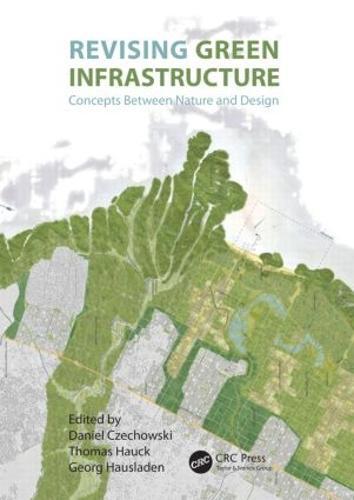Full Product Details
Author: Daniel Czechowski (Technische Universitaet Muenchen, Freising, Germany) ,
Thomas Hauck (Technische Universität München, Freising, Germany) ,
Georg Hausladen (Technische Universität München, Germany)
Publisher: Taylor & Francis Inc
Imprint: CRC Press Inc
Dimensions:
Width: 15.60cm
, Height: 2.50cm
, Length: 23.40cm
Weight: 0.966kg
ISBN: 9781482232202
ISBN 10: 1482232200
Pages: 488
Publication Date: 06 November 2014
Audience:
College/higher education
,
Professional and scholarly
,
Postgraduate, Research & Scholarly
,
Professional & Vocational
Format: Hardback
Publisher's Status: Active
Availability: In Print

This item will be ordered in for you from one of our suppliers. Upon receipt, we will promptly dispatch it out to you. For in store availability, please contact us.
Reviews
This book is a comprehensive overview on green infrastructure from an interdisciplinary and international perspective. The contributions by leading experts offer a broad spectrum of theoretical knowledge, research concepts, design ideas, and strategic advice. For me, Revising Green Infrastructure serves as a reliable source of information and gives inspiration for future research as well as practice. -Martin Prominski, Gottfried Wilhelm Leibniz Universitat Hannover, Germany This book gathers perspectives on green infrastructure from engineers, ecologists, and landscape architects. The conversation is more theoretical than practical; it focuses on theories of greenness, research projects, teaching methods, and some best practice examples. Recurring themes include machine analogies, new paradigms, and the relationship between 'nature' and 'culture.' Overall, the book comes from an architectural perspective in which landscapes are seen as manifestations of grand ideas. The book is divided into four sections: function and process, culture and specificity, governance and instruments, and applied design. The first two sections are entirely theoretical. The last two contain some physical relationship to infrastructure, usually urban water conservation and wastewater treatment. -Ringgold, Inc. Book News, February 2015
... much of the current work in green infrastructure is either driven by science and technical considerations, and is devoid of design intelligence and the ability to address spatial issues, or it involves unrealistic design visions with little functional relevance or any connection to democratic processes. This book aims to address the gap between these two approaches through the presentation of a range of methods for designing green infrastructure and through the exploration of different relationships between design and ecology. It is dense with examples where authors work through both theoretical explorations, and also the application of ideas in planning and design for green infrastructure. This is an interesting contribution that broadens the professional literature on this topic. -Topos Magazine, 2015 This book is a comprehensive overview on green infrastructure from an interdisciplinary and international perspective. The contributions by leading experts offer a broad spectrum of theoretical knowledge, research concepts, design ideas, and strategic advice. For me, Revising Green Infrastructure serves as a reliable source of information and gives inspiration for future research as well as practice. -Martin Prominski, Gottfried Wilhelm Leibniz Universitat Hannover, Germany This book gathers perspectives on green infrastructure from engineers, ecologists, and landscape architects. The conversation is more theoretical than practical; it focuses on theories of greenness, research projects, teaching methods, and some best practice examples. Recurring themes include machine analogies, new paradigms, and the relationship between 'nature' and 'culture.' Overall, the book comes from an architectural perspective in which landscapes are seen as manifestations of grand ideas. The book is divided into four sections: function and process, culture and specificity, governance and instruments, and applied design. The first two sections are entirely theoretical. The last two contain some physical relationship to infrastructure, usually urban water conservation and wastewater treatment. -Ringgold, Inc. Book News, February 2015 This new book edited by Czechowski, Huack, and Hausladen brings together a collection of 21 papers from a range of 30+ researchers hailing from different countries and understandings of GI: chiefly from the USA and Europe but Haiti, Peru, China, and Vietnam are also represented. -International Journal of Urban Sustainable Development, Vol. 7, Issues 2, 2015
This book is a comprehensive overview on green infrastructure from an interdisciplinary and international perspective. The contributions by leading experts offer a broad spectrum of theoretical knowledge, research concepts, design ideas, and strategic advice. For me, Revising Green Infrastructure serves as a reliable source of information and gives inspiration for future research as well as practice. -Martin Prominski, Gottfried Wilhelm Leibniz Universitat Hannover, Germany




